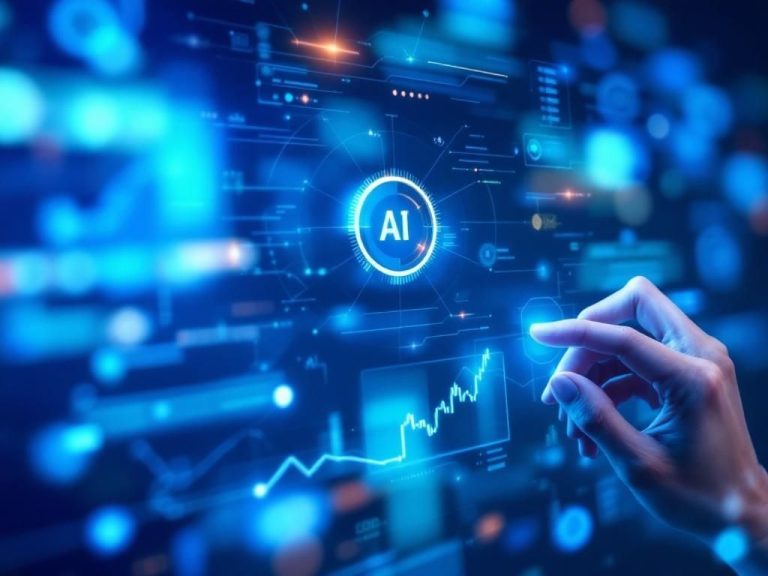The legal industry is on the brink of a transformation driven by AI technologies. As we move towards 2025, the integration of artificial intelligence into legal work promises to enhance efficiency, reduce costs, and improve the overall quality of legal services. From contract analysis to predictive analytics, AI tools are set to revolutionize how lawyers and firms operate. This article explores the various applications of AI in the legal profession, the challenges that come with these changes, and what the future holds for legal practitioners.
Understanding AI in Legal Work
Artificial Intelligence refers to the simulation of human intelligence processes by machines, particularly computer systems. In the context of legal work, AI can assist in a variety of tasks including:
- Document review and analysis
- Contract management
- Legal research
- Predictive analytics for case outcomes
- Client communication and engagement
Key AI Technologies in Law
Several advanced technologies have emerged as the backbone of AI applications in the legal field. These include:
- Machine Learning: Algorithms that improve through experience, allowing for better predictions and analyses based on historical data.
- Natural Language Processing (NLP): The ability of machines to understand and interpret human language, which is crucial for document analysis and legal research.
- Robotic Process Automation (RPA): The automation of repetitive tasks, freeing up lawyers to focus on more strategic aspects of their work.
Applications of AI in the Legal Sector
Document Review and eDiscovery
One of the most time-consuming aspects of legal work is document review, especially during litigation. AI-powered tools can quickly scan massive volumes of documents to identify relevant information, flagging key documents for review by human lawyers.
Contract Management
AI tools can streamline the contract lifecycle from creation to execution and renewal management. They can identify risks, suggest amendments, and ensure compliance with legal standards.
| Benefits of AI in Contract Management | Description |
|---|---|
| Efficiency | Reduces the time needed for contract drafting and review. |
| Risk Mitigation | Identifies potential legal risks in contracts before execution. |
| Cost Reduction | Decreases the costs associated with manual contract management processes. |
Legal Research and Insights
AI can significantly enhance legal research capabilities by analyzing vast databases of case law and legal documents. Tools powered by NLP can understand legal queries and return highly relevant case precedents, statutes, and regulations. This not only saves time but also ensures that lawyers have access to the most pertinent information.
Challenges of Integrating AI in Legal Work
Ethical Considerations
As AI tools become more prevalent, ethical issues arise regarding the accountability of AI decisions, the potential for bias in algorithms, and the implications for client confidentiality. Legal professionals must navigate these challenges carefully to uphold the integrity of the legal profession.
Data Privacy and Security
Legal work often involves handling sensitive information. The implementation of AI tools necessitates stringent data privacy and security measures to prevent data breaches and maintain client trust.
The Future of AI in Law: What to Expect by 2025
As we look ahead, several trends are likely to shape the future of AI in the legal field:
- Increased Adoption: More law firms are expected to adopt AI tools as they become more accessible and affordable.
- Enhanced Collaboration: AI systems will facilitate better collaboration between legal teams, leveraging data insights to drive strategic decisions.
- Regulation and Compliance: Governments may introduce regulations to govern the use of AI in legal practice, ensuring ethical and responsible usage.
Skills for the Future Lawyer
With the rise of AI, the skills required for legal professionals will also evolve. Lawyers will need to develop a blend of technological proficiency and traditional legal expertise. Some essential skills for the future lawyer include:
- Data analysis and interpretation
- Understanding of AI and machine learning basics
- Ability to work in interdisciplinary teams
- Adaptability to new technologies and processes
Conclusion
The integration of AI tools into legal work is not just a fleeting trend; it is a necessary evolution in a rapidly changing landscape. By embracing AI technologies, legal professionals can improve their efficiency, enhance client service, and remain competitive in an increasingly tech-centric world. As we approach 2025, the legal sector stands poised for a significant transformation that will ultimately benefit both practitioners and clients alike.
FAQ
What are AI tools for legal work?
AI tools for legal work are software applications that leverage artificial intelligence to assist with various legal tasks, including document review, legal research, contract analysis, and case prediction.
How can AI improve efficiency in legal practice?
AI can improve efficiency in legal practice by automating repetitive tasks, reducing time spent on research, and enabling lawyers to focus on more complex legal issues, thereby enhancing productivity.
What are the benefits of using AI in legal work?
The benefits of using AI in legal work include increased accuracy, faster turnaround times, cost savings, improved client service, and the ability to analyze large volumes of data effectively.
Are AI tools secure for handling sensitive legal information?
Yes, most AI tools designed for legal work implement robust security measures to protect sensitive information, including encryption and compliance with data protection regulations.
Will AI replace lawyers in the future?
While AI will automate certain tasks traditionally performed by lawyers, it is unlikely to replace them entirely; instead, AI will serve as a valuable tool that enhances legal practice and supports decision-making.
How can law firms implement AI tools effectively?
Law firms can implement AI tools effectively by assessing their specific needs, training staff on the technology, integrating it into existing workflows, and continuously evaluating its impact on their operations.




